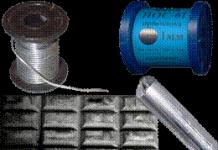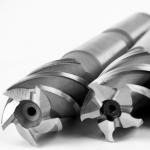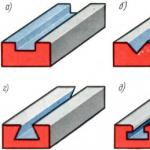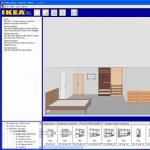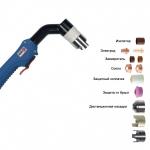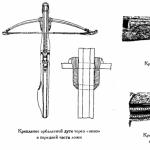One of the main components of comfortable housing is the presence of a well-thought-out heating system. At the same time, the choice of the type of heating and the required equipment is one of the main questions that need to be answered at the design stage of the house. An objective calculation of the heating boiler power by area will eventually allow you to get a completely efficient heating system.
We will now tell you about the competent conduct of this work. In doing so, consider the features inherent in different types heating. After all, they must be taken into account when carrying out calculations and the subsequent decision to install one or another type of heating.
Basic calculation rules
At the beginning of my story about how to calculate power heating boiler, we will consider the quantities used in the calculations:
- room area (S);
- specific power of the heater per 10 m² of heated area - (W sp.). This value is determined by adjusting for climatic conditions separate region.
This value (W beats) is:
- for the Moscow region - from 1.2 kW to 1.5 kW;
- for the southern regions of the country - from 0.7 kW to 0.9 kW;
- for the northern regions of the country - from 1.5 kW to 2.0 kW.

The power calculation is carried out as follows:
W cat. \u003d (S * Wsp.): 10
Advice! For simplicity, a simplified version of this calculation can be used. In it Wud.=1. Therefore, the heat output of the boiler is defined as 10kW per 100m² of heated area. But with such calculations, at least 15% must be added to the obtained value in order to get a more objective figure.
Calculation example
As you can see, the instructions for calculating the heat transfer intensity are simple. But, nevertheless, we will accompany it with a specific example.
The conditions will be as follows. The area of heated premises in the house is 100m². Specific power for the Moscow region is 1.2 kW. Substituting the available values into the formula, we get the following:
W boiler \u003d (100x1.2) / 10 \u003d 12 kilowatts.
Calculation for different types of heating boilers
The degree of efficiency of the heating system depends primarily on the correct choice of its type. And of course, from the accuracy of the calculation of the required performance of the heating boiler. If the calculation of the thermal power of the heating system was not carried out accurately enough, then negative consequences will inevitably arise.
If the heat output of the boiler is less than required, it will be cold in the rooms in winter. In the case of excess performance, there will be an overexpenditure of energy and, accordingly, the money spent on heating the building.

To avoid these and other problems, it is not enough just to know how to calculate the power of a heating boiler.
It is also necessary to take into account the features inherent in systems using different types heaters (you can see a photo of each of them further in the text):
- solid fuel;
- electric;
- liquid fuel;
- gas.
The choice of one or another type largely depends on the region of residence and the level of infrastructure development. It is important to have the opportunity to purchase a certain kind fuel. And, of course, its cost.
Solid fuel boilers
The calculation of the power of a solid fuel boiler must be made taking into account the features characterized by the following features of such heaters:
- low popularity;
- relative accessibility;
- opportunity battery life- it is provided in a number of modern models these devices;
- economy during operation;
- the need for extra space for fuel storage.

Another characteristic feature that should be taken into account when calculating the heating power solid fuel boiler, is the cyclicity of the resulting temperature. That is, in rooms heated with its help, the daily temperature will fluctuate within 5ºС.
Therefore, such a system is far from the best. And if possible, it should be abandoned. But, if this is not possible, there are two ways to smooth out the existing shortcomings:
- The use of a thermal bulb needed to control the air supply. This will increase the burning time and reduce the number of furnaces;
- The use of water heat accumulators, with a capacity of 2 to 10m². They are included in the heating system, allowing you to reduce energy costs and, thereby, save fuel.
All this will reduce the required performance. Therefore, the effect of the application of these measures must be taken into account when calculating the power of the heating system.
Electric boilers
They are characterized by the following features:
- high cost of fuel - electricity;
- possible problems due to network outages;
- environmental friendliness;
- ease of management;
- compactness.

All these parameters should be taken into account when calculating the power electric boiler heating. After all, it is not purchased for one year.
Oil boilers
They have the following characteristic features:
- not eco-friendly;
- convenient in operation;
- require additional storage space for fuel;
- have an increased fire hazard;
- use fuel, the price of which is quite high.

gas boilers
In most cases are the most the best option organization of the heating system. have the following characteristic features, which must be taken into account when calculating the power of the heating boiler:
- ease of operation;
- do not require a place to store fuel;
- safe in operation;
- low cost of fuel;
- economy.

Calculation for heating radiators
Let's say you decide to install a heating radiator with your own hands. But first you need to buy it. And choose exactly the one that suits the power.

- First, we determine the volume of the room. To do this, multiply the area of the room by its height. As a result, we get 42m³.
- Further, you should know that for heating 1m³ of room area in middle lane Russia needs to spend 41 watts. Therefore, to find out the desired performance of the radiator, we multiply this figure (41 W) by the volume of the room. As a result, we get 1722W.
- Now let's calculate how many sections our radiator should have. Make it simple. Each element of a bimetallic or aluminum radiator heat dissipation is 150W.
- Therefore, we divide the performance we obtained (1722W) by 150. We get 11.48. Round up to 11.
- Now you need to add another 15% to the resulting figure. This will help smooth out the increase in required heat transfer during the most severe winters. 15% of 11 is 1.68. Round up to 2.
- As a result, we add 2 more to the existing figure (11). We get 13. So, to heat a room with an area of 14m², we need a radiator with a power of 1722W, which has 13 sections.
Now you know how to calculate the desired performance of the boiler, as well as the heating radiator. Take advantage of our advice and provide yourself with an efficient and at the same time not wasteful heating system. If you need more detailed information, then you can easily find it in the corresponding video on our website.
To provide comfortable living in the house in winter, the boiler must produce enough heat energy to fully compensate for the heat loss of the building. In addition, it is necessary to provide a certain power reserve in case of severe cold or an increase in the area of \u200b\u200bthe building. To calculate the power of the boiler, you need to take into account quite a few factors. In heat engineering, such a calculation is one of the most difficult.
There are many calculations of the heating system, namely the power of the boiler - one of the most difficult
The need to calculate the heat transfer of the boiler
Whatever materials a building is made of, it constantly releases heat to the outside. The heat loss of the house for each room may differ and depend on the materials of construction and the degree of insulation. If you take the calculations seriously, then it is better to entrust such work to specialists. Then, in accordance with the results obtained, a boiler is selected.
It is not very difficult to independently calculate the heat loss of a building, but many factors must be taken into account. The easiest way to solve the problem is with the help of a special device - a thermal imager. This device small size, the display of which indicates actual losses heat of the building. At the same time, you can clearly see those places where the maximum leakage of thermal energy is observed, and take measures to correct the situation.
 You can immediately install a powerful boiler without calculations
You can immediately install a powerful boiler without calculations
Of course, you can just take a powerful boiler and not carry out any calculations. However, in such a situation, gas costs can be very high. In addition, if the boiler is underloaded, then its service life is reduced. However, the heat generator can be loaded, for example, by using it for heating earlier unheated premises. However, not a single owner of a private house wants to overpay for wasted fuel.
If the power of the heat generator turned out to be insufficient, then it will not be possible to create comfortable conditions residence, and the boiler itself will operate in the mode of constant overload. As a result, expensive equipment will fail prematurely. Thus, only one conclusion can be drawn - you need to calculate the power of the boiler for the house, thereby making a competent selection of heating equipment.
The easiest way is to independently calculate the power of the heating boiler for the area of \u200b\u200bthe house. After that, it will be possible to say exactly which heating unit needed to heat all areas of the building.
Basic Formula
If we analyze the results of calculations carried out over several years, then one regularity is observed - for heating every 10 m 2 of an area, it is necessary to spend 1 kW of thermal energy. This statement is true for buildings with medium insulation, and the height of the ceilings in them is in the range from 2.5 to 2.7 m.
If the building meets these standards, then it will be quite simple to determine the capacity of the heating boilers, just use a simple formula:

Latest indicator for different regions of the country has the following meanings:
- Moscow region - from 1.2 to 1.5 kW.
- The middle band is from 1 to 1.2 kW.
- South of the country - from 0.7 to 0.9 kW.
- Northern territories - from 1.5 to 2 kW.
As an example, you can calculate the power of a heat generator for a 12 × 14 m house built of brick in the Moscow region. The total area of the building is 168 m 2 . The value of specific power Wsp is taken equal to 1. As a result, W = (168 × 1) / 10 = 16.8 kW. The resulting design power of the heat generator should be rounded up. However, this is not yet a complete calculation of a gas boiler for a house by area, since it is necessary to adjust the obtained indicator.
Additional Calculations
Residential buildings with average characteristics are quite rare in practice. In order for the calculation of the power of the boiler house to be as accurate as possible, additional indicators have to be taken into account. One of them has already been considered in the main formula - the specific power spent on heating 10 m 2.
As a reference, it is necessary to use the indicator for the middle band. At the same time, in each zone, one can see a rather serious scatter of specific capacitance values. The way out of this situation is simple - the further north the area is located in the climatic zone, the higher the coefficient should be, and vice versa. For example, for Siberia with frosts of about 35 degrees, it is customary to use Wsp = 1.8.
Another factor affecting the calculation of the boiler power is the height of the ceilings. If this parameter differs significantly from the average (2.6 m), then a correction factor must be calculated. To do this, the real value must be divided by the average.
It is equally important to take into account in the calculations heat loss buildings. The process of heat leakage is observed in every building. For example, if the walls are poorly insulated, then losses can reach up to 35%. Thus, during the calculations a special coefficient should be used:
- A structure made of wood, foam blocks or bricks, the age of which exceeds 15 years from high-quality insulation- K=1.
- Buildings of other materials with poorly insulated walls - K = 1.5.
- If the roof was not insulated in the building, and not just the walls - K = 1.8.
- Modern high-quality insulated houses - K = 0.6.
 Do not forget to take into account the coefficient of wood blocks
Do not forget to take into account the coefficient of wood blocks This is how the required power of the heat generator is calculated in order to make right choice equipment. However, if the boiler is also planned to be used for heating water, the obtained value of its power will have to be increased by 25%. Thus, to determine the required power of the heat generator you need to use the following algorithm:
- Calculated total area buildings and is divided by 10. In this case, the indicator Wsp does not need to be taken into account.
- The calculated value is adjusted depending on climate zone in which the building was erected. The indicator determined at the first stage is multiplied by the coefficient of the region.
- If the actual value of the ceiling height differs significantly from the average, this must be taken into account in the calculation. First you need to divide the actual figure by the average. The resulting coefficient is multiplied by the power of the heat generator, determined taking into account the correction for climatic features terrain.
- The heat losses of the building are taken into account. The result obtained at the previous stage must be multiplied by the heat loss coefficient.
- If the boiler is also used for heating water, its capacity is increased by 25%.
The result obtained using this algorithm is different high precision, and it is suitable for choosing a boiler that runs on any type of fuel.
In accordance with the norms of SNiP
Calculate the equipment power for heating system at home, based on building codes and rules (SNiP). This document defines required amount thermal energy for heating 1 m 3 of air. The volume calculation is fairly easy to do. It is enough to determine the volume interior spaces buildings and multiply it by the rate of consumption of thermal energy.
According to SNiP in panel building to heat 1 m 3 of air, you need to spend 41 W of heat energy.
For brick house the norm is 34 watts. After performing the calculation, the resulting power value must be converted to kilowatts. It should also be recalled that in heat engineering, calculated indicators are rounded up.
If you want to get the most accurate results, then correction factor must be taken into account:
- If a heated room is located above or below the apartment, the correction is 0.7.
- If it is unheated, the coefficient will be 1.
- If the apartment is located above the basement or under the attic - the amendment will be 0.9.
You also need to take into account the number of external walls in the room. When only one wall goes outside, the coefficient will be 1.1, with two - 1.2, three - 1.3. Thus, the calculation of a boiler for heating a house can be calculated by the total volume of the building or its area. Whichever method is chosen, the process is not very complex. All necessary calculations can be carried out by anyone who does not have special knowledge.
Before designing a heating system, installing heating equipment, it is important to choose a gas boiler that can generate the required amount of heat for the room. Therefore, it is important to choose a device of such power that its performance is as high as possible, and the resource is large.
We will tell you how to calculate the power gas boiler with high precision and certain parameters. The article presented by us describes in detail all types of heat loss through openings and building construction, formulas for their calculation are given. Introduces the features of the production of calculations specific example.
The correct calculation of the power of a gas boiler will not only save on consumables, but also increase the efficiency of the device. Equipment whose heat output exceeds the actual heat demand will operate inefficiently when, as an underpowered device, it cannot heat the room properly.
There is modern automated equipment that independently regulates the gas supply, which eliminates unnecessary expenses. But if such a boiler performs its work at the limit of its capabilities, then its service life is reduced.
As a result, the efficiency of the equipment decreases, parts wear out faster, and condensate forms. Therefore, there is a need to calculate the optimal power.
Image Gallery
Choice necessary equipment for the heating system is an extremely important task. Owners of private houses must face it, and in Lately and many landlords strive to achieve complete independence in this matter by creating their own autonomous systems. And one of key points, of course, is a matter of choosing a boiler.
If the housing is connected to the main supply natural gas, then there is nothing special to think about - optimal solution there will be installation gas equipment. The operation of such a heating system is incomparably more economical than all the others - the cost of gas is relatively low, especially in comparison with electricity. All sorts of problems related to the additional purchase, transportation and storage of fuel, which are typical for solid or liquid fuel installations, disappear. Subject to all installation requirements and compliance with the rules of use, it is quite safe and has high performance. The main thing is to correctly determine desired model, for which you need to know how to choose a gas boilerso that it fully complies specific conditions operation, met the wishes of the owners in terms of functionality and ease of use.
The main parameters for choosing a gas boiler
There are a number of criteria by which the model of the purchased boiler should be evaluated. It should be immediately noted that almost all of them are interconnected and even interdependent, therefore, they must be considered immediately and in a complex:
- The key parameter is the total thermal power of the gas boiler, which must correspond to the tasks of a particular heating system.
- The location of the future installation of the boiler - this criterion will very often depend on the power mentioned above.
- Type of boiler according to the layout - wall or floor. The choice also lies in direct proportion to both the power and the installation site.

- The type of boiler burner - open or closed - will also depend on the same criteria. Accordingly, a system for the removal of combustion products is organized - through conventional chimney with natural draft or through a forced smoke exhaust system.
- Number of circuits - will the boiler be used only for heating needs, or will it also take over the provision hot water. If a double-circuit boiler is selected, then its type is taken into account according to the structure of the heat exchangers.
- The degree of dependence of the boiler on energy supply. This parameter is especially important to take into account in cases where power outages in a settlement occur with frightening regularity.
- Of great importance may be the additional equipment of the boiler with the elements necessary for effective work heating systems, the presence of built-in control systems and ensuring the safety of operation.
- And finally, the manufacturer of the boiler, and, of course, the price, which will depend on many of the factors listed above.
The first step is to correctly determine the power of the boiler
It is simply impossible to proceed to the choice of any boiler, if there is no clarity, there must be a heating installation.
IN technical documentation boiler, the value of the rated power must be indicated, and in addition, recommendations are often given on heating approximately how much space it is designed for. However, these recommendations can be considered rather conditional, since they do not take into account the "specifics", that is, the actual operating conditions and features of the house or apartment.
The same caution should be applied to widespread“axiom” that heating 10 m² of housing area requires 1 kW of thermal energy. This value is also very approximate, which can only be valid under certain conditions - the average height of the ceilings, one external wall with one window, etc. Moreover, it does not take into account climatic zone, the location of the premises relative to the cardinal points and a number of other important parameters.
According to all the rules, heat engineering calculations can only be carried out by specialists. However, we will take the liberty of offering the reader a method self calculation power, taking into account most of the factors affecting the efficiency of heating a house. With such a calculation, the error, of course, will be, but within quite acceptable limits.
The method is based on the calculation of the required heat output for each room where heating radiators will be installed, with the subsequent summation of the values. Well, the following parameters act as initial data:
- Room area.
- Ceiling height.
- Quantity external walls, the degree of their insulation, location relative to the cardinal points.
- The level of minimum winter temperatures for the region of residence.
- Number, size and type of windows.
- "Neighbourhood" of the premises vertically - for example, heated premises, cold attic and so on .
- The presence or absence of doors to the street or to a cold balcony.
Any owner of a house or apartment has a plan for his housing. Putting it in front of you, it will not be difficult to make a table (in an office application or even just on a piece of paper), which indicates all the heated rooms and their characteristics. For example, as shown below:

| Room: | Area, ceiling height | External walls (number where to look) | Number, type and size of windows | Existence of a door to the street or a balcony | Required heat output |
|---|---|---|---|---|---|
| TOTAL: | 92.8 m² | 13.54 kW | |||
| 1st floor, insulated floors | |||||
| Hall | 9.9 m², 3 m | one, West | one, two-chamber double-glazed window, 110×80 | No | 0.94 kW |
| Kitchen | 10.6 m, 3 m | one, south | one, wooden frame, 130×100 | No | 1.74 kW |
| Living room | 18.8 m², 3 m | three, north, east | four, double glazing, 110×80 | No | 2.88 kW |
| Tambour | 4.2 m², 3 m | one, West | No | one | 0.69 kW |
| Bathroom premises | 6 m², 3 m | one, North | No | No | 0.70 kW |
| 2nd floor, above - a cold attic | |||||
| Hall | 5.1 m², 3 m | one, North | No | No | 0.49 kW |
| Bedroom #1 | 16.5 m², 3 m | three, south, west | one, double-glazed window, 120×100 | No | 1.74 kW |
| Bedroom #2 | 13.2 m², 3 m | two, north, east | No | 1.63 kW | |
| Bedroom #3 | 17.5 m², 3 m | two, east, south | two, double-glazed window, 120×100 | one | 2.73 kW |
After the table is compiled, you can proceed to the calculations. To do this, below is a handy calculator that will help you quickly determine the required thermal power for each of the rooms.
The level of negative outdoor temperatures is taken from the average characteristic for the coldest decade of winter in the region of residence.
To provide comfortable temperature throughout the winter, the heating boiler must produce such an amount of heat energy that is necessary to replenish all the heat losses of the building / room. Plus, it is also necessary to have a small power reserve in case of abnormal cold weather or expansion of areas. We will talk about how to calculate the required power in this article.
To determine the performance of heating equipment, it is first necessary to determine the heat loss of the building / room. Such a calculation is called thermal engineering. This is one of the most complex calculations in the industry as there are many factors to consider.
Of course, the amount of heat loss is affected by the materials that were used in the construction of the house. Therefore, the building materials from which the foundation is made, walls, floor, ceiling, floors, attic, roof, window and door openings are taken into account. The type of system wiring and the presence of warm floors. In some cases, even the presence household appliances which generates heat during operation. But such precision is not always required. There are techniques that allow you to quickly estimate the required performance of a heating boiler without plunging into the wilds of heat engineering.
Calculation of the heating boiler power by area
For an approximate assessment of the required performance of a thermal unit, the area of \u200b\u200bthe premises is sufficient. In the very simple version for central Russia, it is believed that 1 kW of power can heat 10 m 2 of area. If you have a house with an area of 160m2, the boiler power for heating it is 16kW.
These calculations are approximate, because neither the height of the ceilings nor the climate is taken into account. For this, there are coefficients derived empirically, with the help of which appropriate adjustments are made.
The indicated rate - 1 kW per 10 m 2 is suitable for ceilings 2.5-2.7 m. If you have higher ceilings in the room, you need to calculate the coefficients and recalculate. To do this, divide the height of your premises by the standard 2.7 m and get a correction factor.

Calculating the power of a heating boiler by area - the easiest way
For example, the ceiling height is 3.2m. We consider the coefficient: 3.2m / 2.7m \u003d 1.18 rounded up, we get 1.2. It turns out that for heating a room of 160m 2 with a ceiling height of 3.2m, a heating boiler with a capacity of 16kW * 1.2 = 19.2kW is required. They usually round up, so 20kW.
To take into account climatic features, there are ready-made coefficients. For Russia they are:
- 1.5-2.0 for northern regions;
- 1.2-1.5 for regions near Moscow;
- 1.0-1.2 for the middle band;
- 0.7-0.9 for the southern regions.
If the house is located in the middle lane, just south of Moscow, apply a coefficient of 1.2 (20kW * 1.2 = 24kW), if in the south of Russia in Krasnodar Territory, for example, a coefficient of 0.8, that is, less power is required (20kW * 0.8 = 16kW).

Calculation of heating and selection of a boiler - milestone. Find the wrong power and you can get this result ...
These are the main factors to be considered. But the values found are valid if the boiler will only work for heating. If you also need to heat water, you need to add 20-25% of the calculated figure. Then you need to add a "margin" to the peak winter temperatures. That's another 10%. In total we get:
- For home heating and hot water in the middle lane 24kW + 20% = 28.8kW. Then the reserve for cold weather is 28.8 kW + 10% = 31.68 kW. We round up and get 32kW. When compared with the original figure of 16kW, the difference is two times.
- House in the Krasnodar Territory. Adding power for heating hot water: 16kW+20%=19.2kW. Now the "reserve" for the cold is 19.2 + 10% \u003d 21.12 kW. Rounding up: 22kW. The difference is not so striking, but also quite decent.
It can be seen from the examples that it is necessary to take into account at least these values. But it is obvious that in calculating the power of the boiler for a house and an apartment, there should be a difference. You can go the same way and use coefficients for each factor. But there is an easier way that allows you to make corrections in one go.
When calculating a heating boiler for a house, a coefficient of 1.5 is applied. It takes into account the presence of heat loss through the roof, floor, foundation. It is fair with an average (normal) degree of wall insulation - laying in two bricks or building materials similar in characteristics.
For apartments, different rates apply. If there is a heated room (another apartment) on top, the coefficient is 0.7, if the heated attic is 0.9, if unheated attic— 1.0. It is necessary to multiply the boiler power found by the method described above by one of these coefficients and get a fairly reliable value.
To demonstrate the progress of calculations, we will calculate the power of a gas heating boiler for an apartment of 65m 2 with 3m ceilings, which is located in central Russia.
- We determine the required power by area: 65m 2 / 10m 2 \u003d 6.5 kW.
- We make a correction for the region: 6.5 kW * 1.2 = 7.8 kW.
- The boiler will heat the water, so we add 25% (we like it hotter) 7.8 kW * 1.25 = 9.75 kW.
- We add 10% for cold: 7.95 kW * 1.1 = 10.725 kW.
Now we round the result and get: 11 kW.
The specified algorithm is valid for the selection of heating boilers for any type of fuel. The calculation of the power of an electric heating boiler will not differ in any way from the calculation of a solid fuel, gas or liquid fuel boiler. The main thing is the performance and efficiency of the boiler, and heat losses do not change depending on the type of boiler. The whole question is how to spend less energy. And this is the area of \u200b\u200bwarming.
Boiler power for apartments
When calculating heating equipment for apartments, you can use the norms of SNiPa. The use of these standards is also called the calculation of boiler power by volume. SNiP sets the required amount of heat for heating one cubic meter air in typical buildings:
- for heating 1m 3 in panel house 41W required;
- V brick house 34W goes to m 3.
Knowing the area of \u200b\u200bthe apartment and the height of the ceilings, you will find the volume, then, multiplying by the norm, you will find out the power of the boiler.

For example, let's calculate the required boiler power for rooms in a brick house with an area of 74m 2 with ceilings of 2.7m.
- We calculate the volume: 74m 2 * 2.7m = 199.8m 3
- We consider according to the norm how much heat will be needed: 199.8 * 34W = 6793W. Rounding up and converting to kilowatts, we get 7kW. This will be required power, which should give out the thermal unit.
It is easy to calculate the power for the same room, but already in a panel house: 199.8 * 41W = 8191W. In principle, in heating engineering they always round up, but you can take into account the glazing of your windows. If the windows have energy-saving double-glazed windows, you can round down. We believe that double-glazed windows are good and we get 8kW.

The choice of boiler power depends on the type of building - brick heating requires less heat than panel
Next, you need, as well as in the calculation for the house, to take into account the region and the need to prepare hot water. The correction for abnormal cold is also relevant. But in apartments, the location of the rooms and the number of storeys play a big role. You need to take into account the walls facing the street:
- One outer wall — 1,1
- Two - 1.2
- Three - 1.3
After taking into account all the coefficients, you get enough exact value, which can be relied upon when choosing equipment for heating. If you want to get an accurate heat engineering calculation, you need to order it from a specialized organization.
There is another method: to define real losses using a thermal imager modern appliance, which will also show the places through which heat leaks go more intensively. At the same time, you can eliminate these problems and improve thermal insulation. And the third option is to use a calculator program that will calculate everything for you. You just need to select and / or enter the required data. At the output, get the estimated power of the boiler. True, there is certain share risk: not clear how much correct algorithms laid the foundation for such a program. So you still have to at least roughly calculate to compare the results.

We hope you now have an idea of how to calculate the power of the boiler. And it doesn’t confuse you that it is, and not solid fuel, or vice versa.

You may be interested in articles about and. In order to have general idea about the mistakes that are often encountered when planning a heating system, see the video.
